What is Ishikari Nabe?
Ishikari Nabe (石狩鍋) is a traditional Hokkaido hot pot dish with fresh salmon and miso as the main ingredients. The dish originated among fishermen in the town of Ishikari, located at the mouth of the salmon-rich Ishikari River.
Legend has it that after a successful catch, fishermen would celebrate by simmering pieces of fresh salmon and bones in miso soup, creating a hearty and satisfying meal.
The dish is characterized by the generous use of vegetables, especially cabbage and onions, which add natural sweetness to the broth.
The authentic preparation is completed by sprinkling sansho (Japanese pepper) just before serving. This final touch not only balances the rich miso flavor but also enhances the salmon’s natural umami while reducing any fishiness.
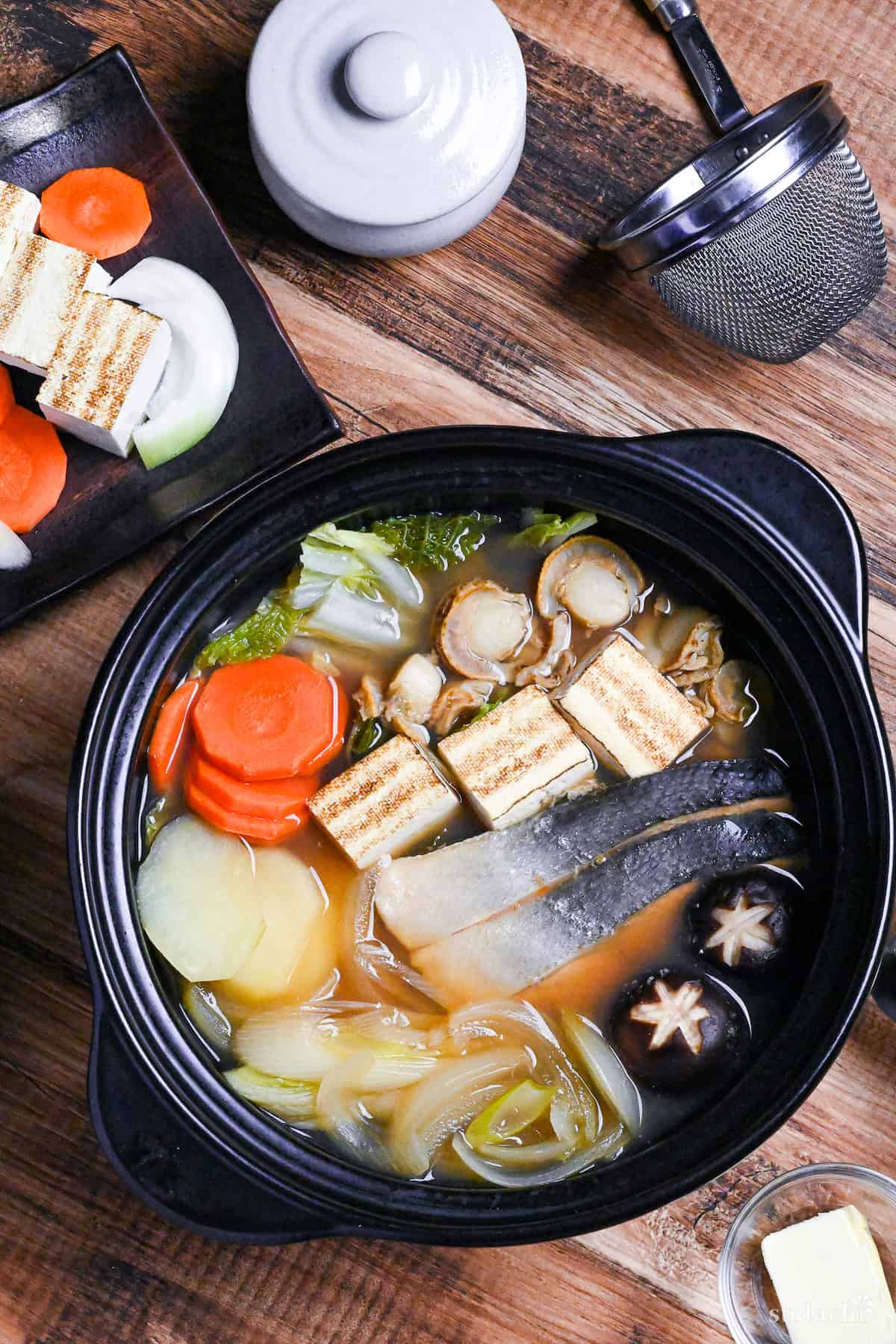
Key Ingredients & Substitution Ideas
- Fresh Salmon Fillets: The star ingredient and an absolute must for Ishikari nabe. For best results, choose high quality, fresh salmon with a bright pink color and firm texture.
- Scallops: Feel free to substitute other shellfish or seafood such as clams or shrimp – whatever’s fresh at your local market!
- Cabbage: While traditional recipes call for green cabbage, I use Napa cabbage. Both varieties work beautifully, each bringing its own character to the dish!
- Base Vegetables: A classic combination of Japanese leeks (negi, or regular leeks as a substitute), onions, carrots, and potatoes.
- Shiitake Mushrooms: Feel free to experiment with local mushroom varieties!
- Tofu: I prefer firm tofu for its ability to hold its shape in the hot pot, but silken tofu works just as well if you enjoy a softer, more delicate texture.
- Broth Base: Water, kombu (dried kelp), soy sauce, sake, and mirin.
- Miso Paste: I used yellow miso (awase miso), which I blended myself by mixing red and white miso in equal parts. If you use white miso alone, you may need to add a little more to get the right depth of flavor – adjust as you taste to find your perfect balance.
- Finishing Touches: Unsalted butter and sansho pepper.
- Udon Noodles: For the finale, prepare these chewy wheat noodles separately. Once you’ve enjoyed all the other ingredients, add the cooked and rinsed udon to the remaining flavorful broth for a satisfying end to your meal.
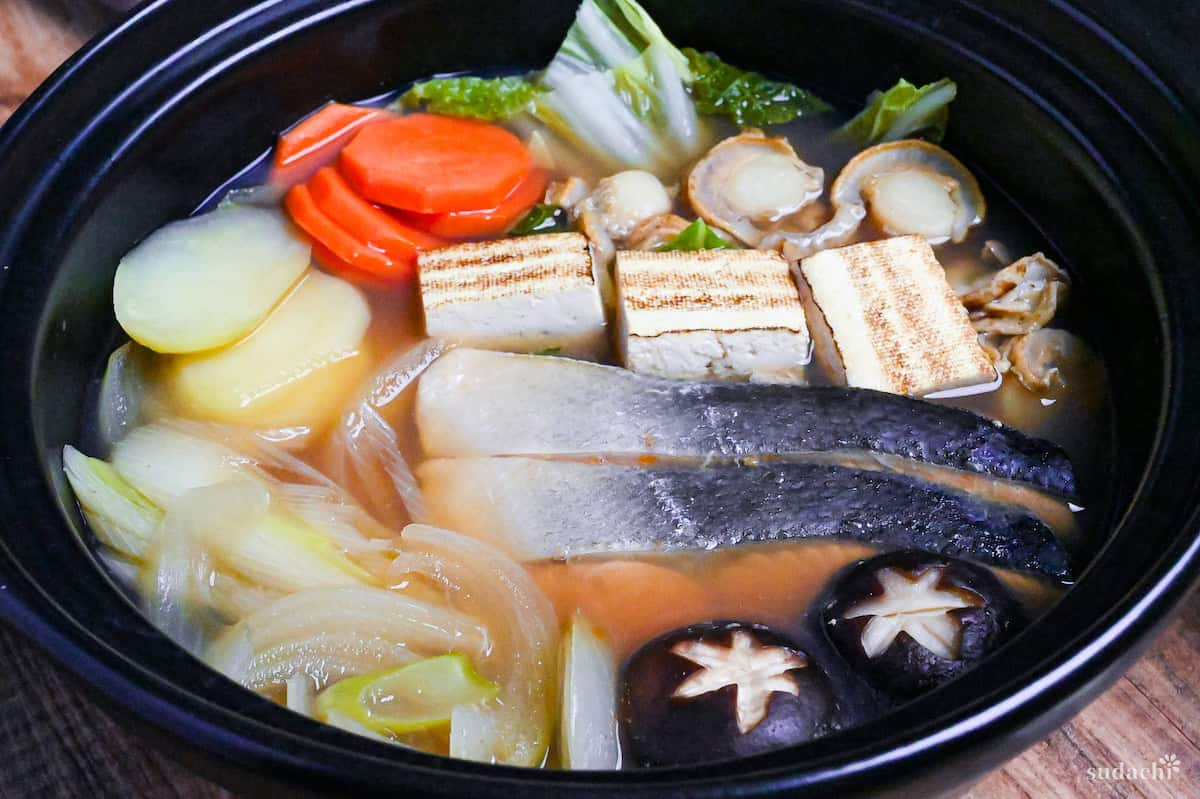
Visual Walkthrough & Tips
Here are my step-by-step instructions for how to make Ishikari Nabe at home. For ingredient quantities and simplified instructions, scroll down for the Printable Recipe Card below.
This section aims to provide a comprehensive overview of the cooking steps and techniques with visuals. It also includes more in-depth tips and tricks and explains why I do what I do.
Begin by combining water and kombu (dried seaweed) in a large pot to make the base stock. Allow to steep at room temperature for at least 30 minutes.
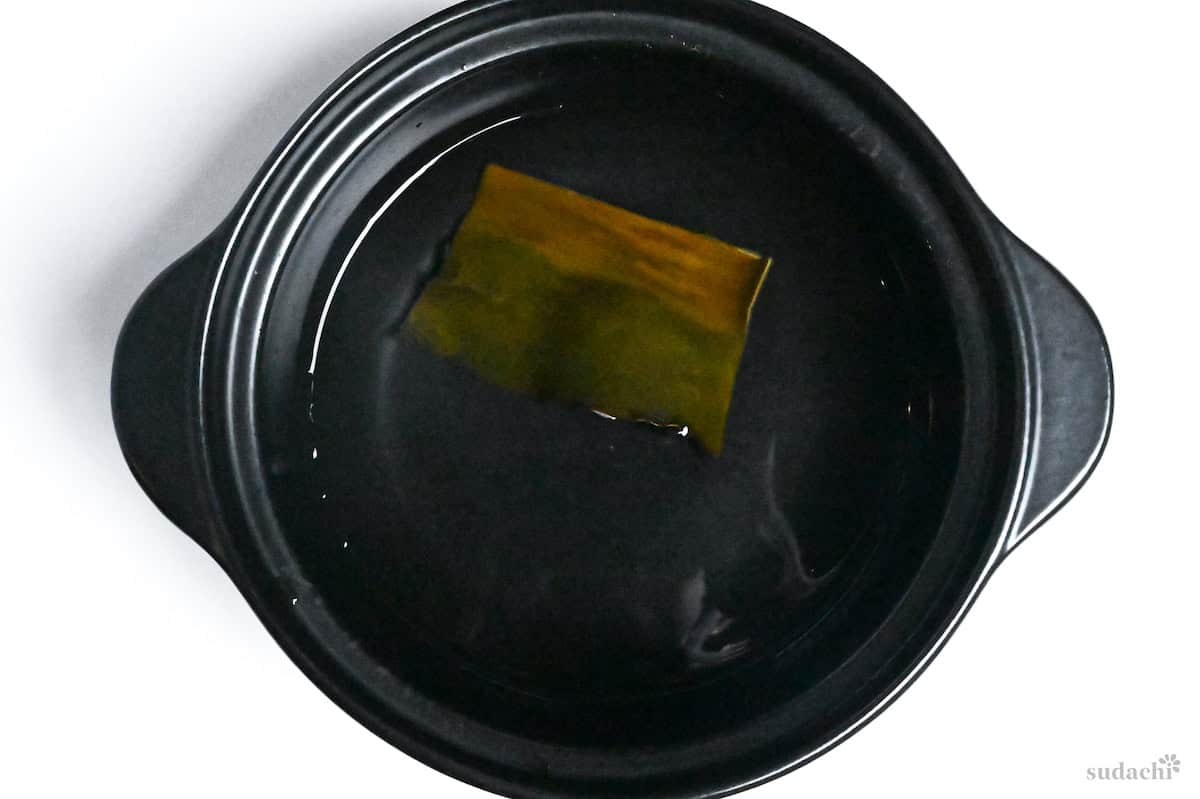
This steeping time allows the kombu to release its natural umami compounds without becoming bitter.
While the kombu is soaking, prepare all the vegetables, salmon and other ingredients.
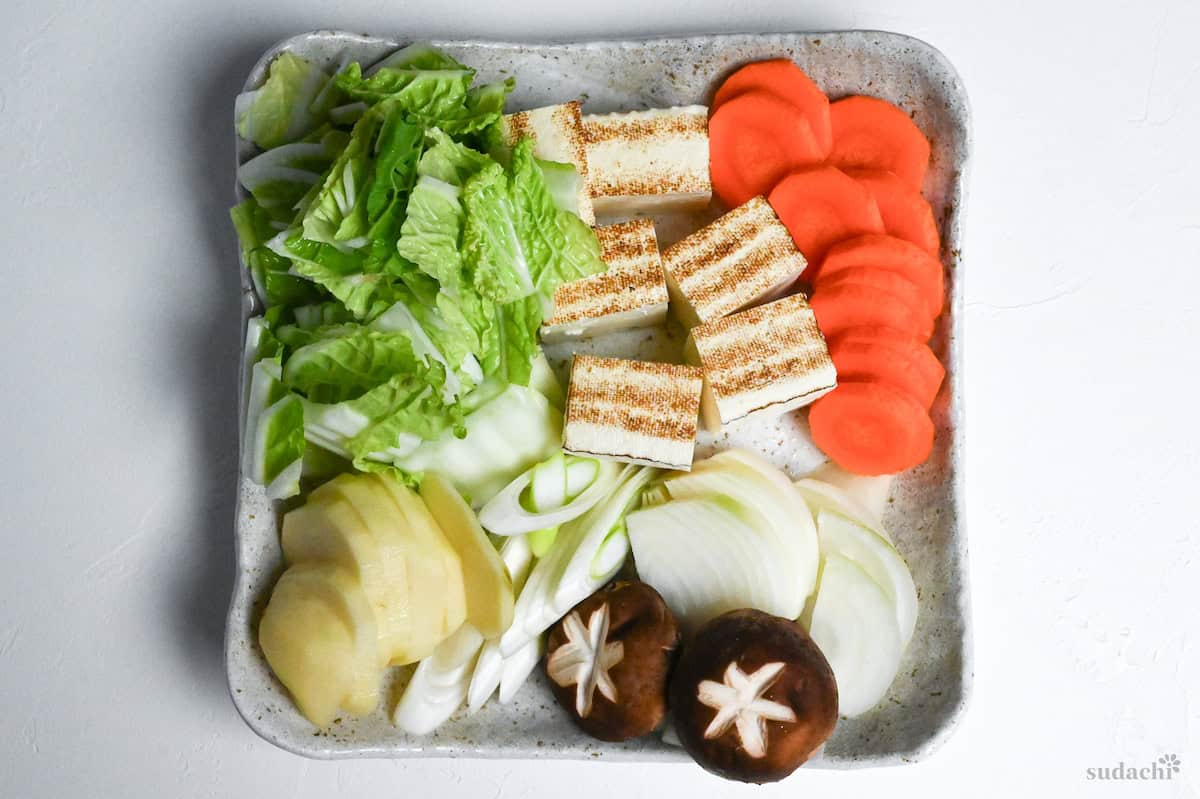
- Tofu: Large cubes
- Carrots: Rounds
- Onions: Sliced
- Shiitake mushrooms: Stems removed
- Leeks: Diagonally sliced and decorated (if you like)
- Potatoes: Peeled and thickly sliced
- Cabbage: Roughly cut
Preparing everything before cooking ensures a smooth cooking process!
After 30 minutes, place the pot over medium heat. Watch carefully – when small bubbles begin to form, but before it reaches a full boil, reduce the heat to low and remove the kombu. Add sake, mirin and soy sauce to complete the base stock.
Place the ingredients in the pot in layers, starting with the items that will take the longest to cook: place the harder vegetables, such as carrots and potatoes, on the bottom, followed by the cabbage and mushrooms, then the seafood on top.
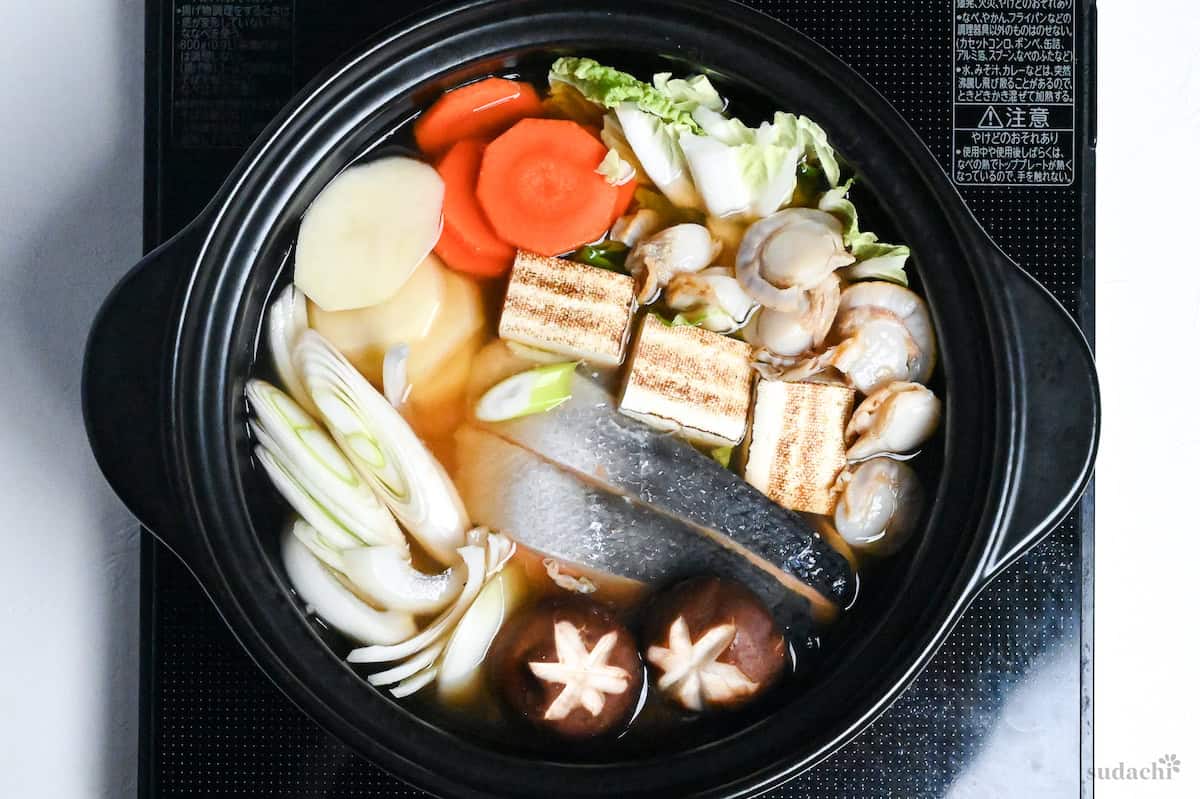
Increase the heat to medium-high and once the broth is bubbling, cover and cook continue to cook for 5 minutes or until the root vegetables are fork-tender and the salmon is cooked through.
Once the vegetables are tender, reduce the heat to the lowest setting. Using a miso strainer or fine-mesh sieve, slowly add the miso paste to the broth, stirring gently to incorporate.
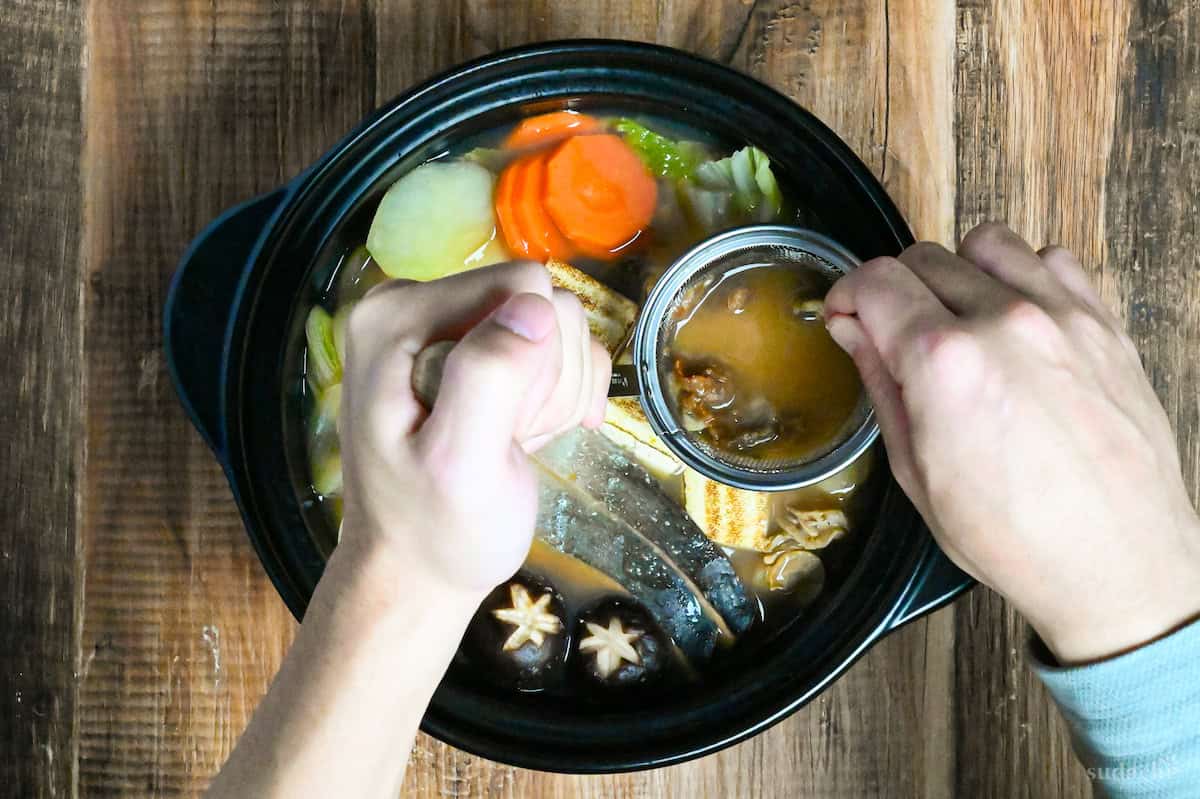
Add butter just before serving to enrich the broth.
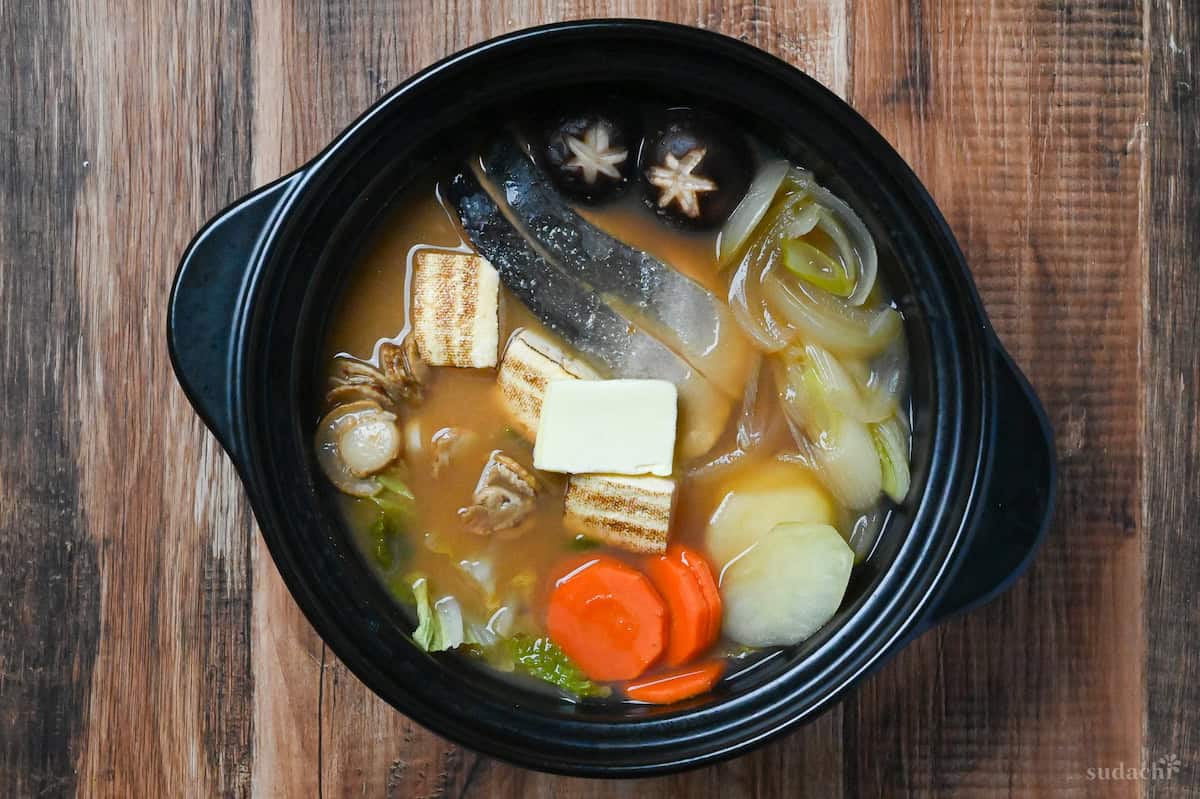
Portion into individual serving bowls, and sprinkle a bit of sansho pepper if you have it.
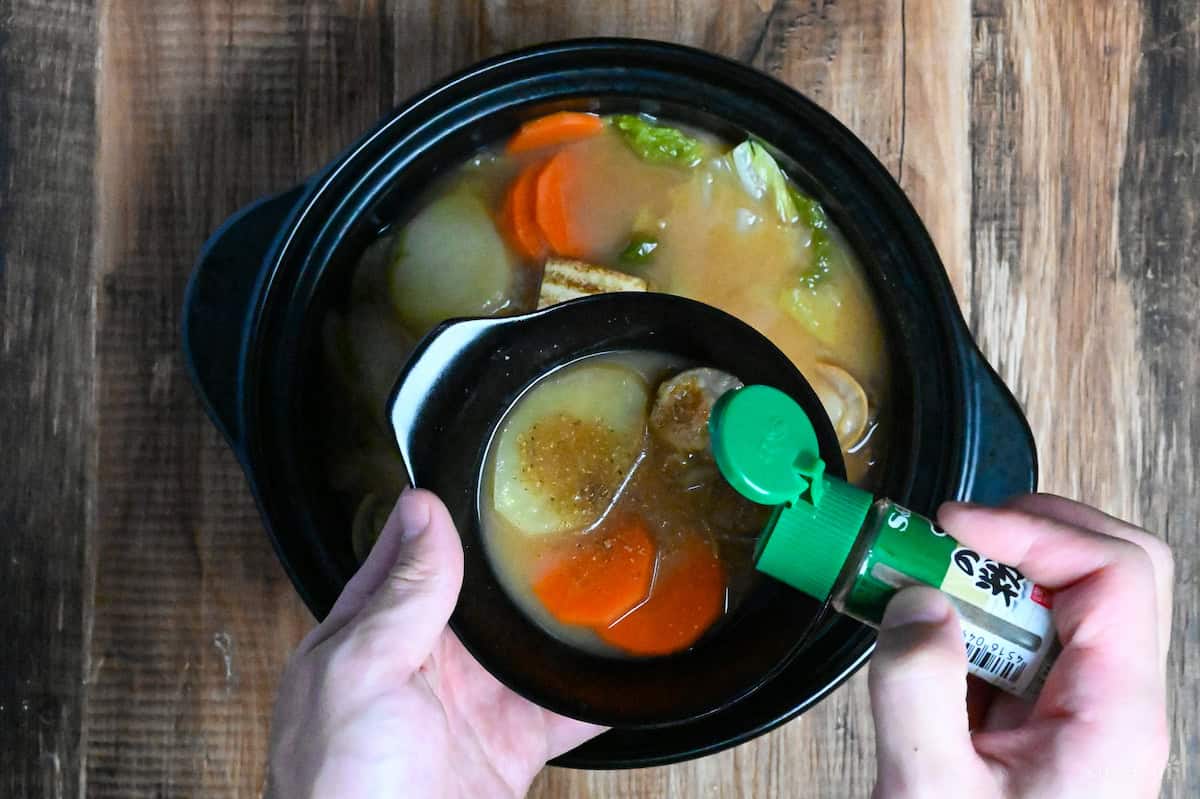
After enjoying the main ingredients, cook the udon noodles in a separate pot according to package directions. Drain thoroughly and add to the remaining broth for a satisfying finish to your meal.
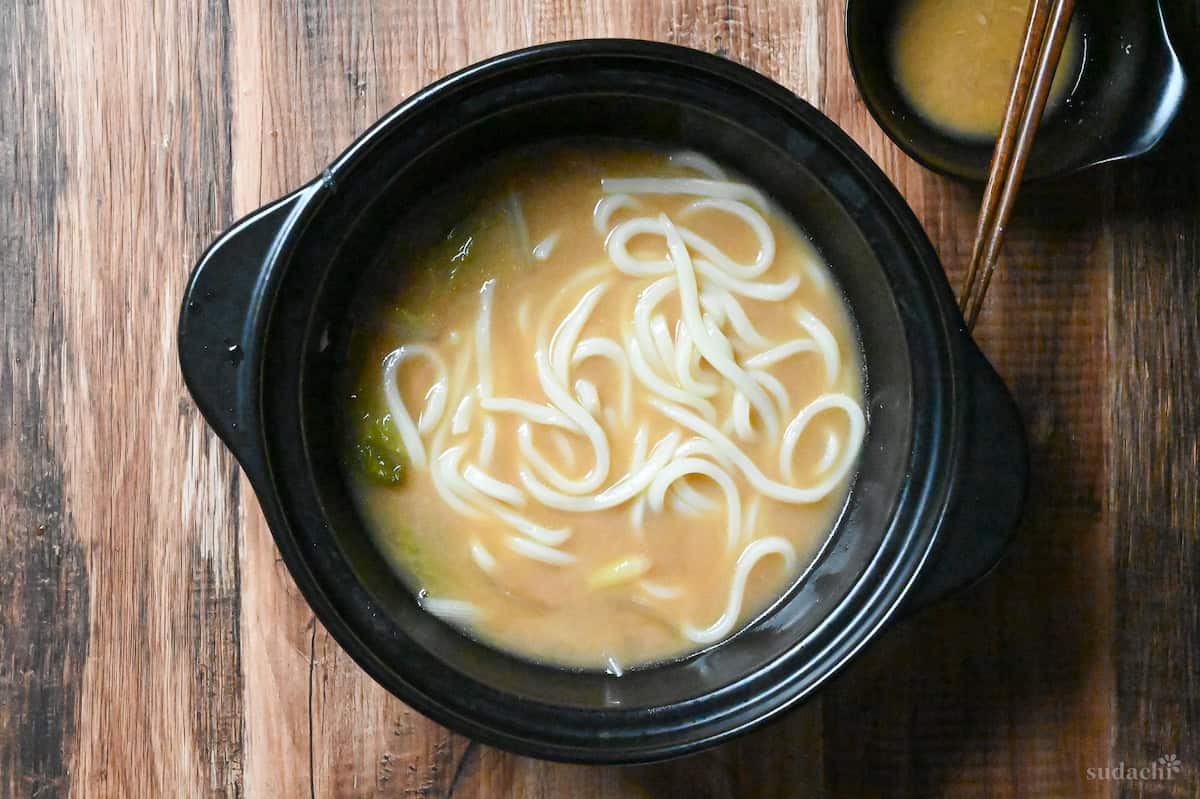
The concentrated broth creates a flavorful noodle dish!
Jump to Full Recipe MeasurementsI hope you enjoy this Ishikari Nabe recipe! If you try it out, I’d really appreciate it if you could spare a moment to let me know what you thought by giving a review and star rating in the comments below. It’s also helpful to share any adjustments you made to the recipe with our other readers. Thank you!
More Hotpot Recipes
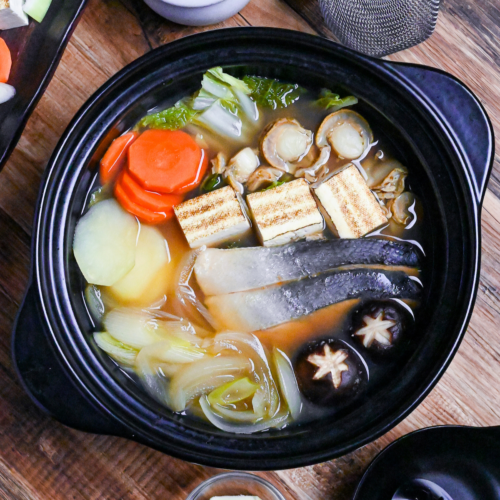
Ishikari Nabe (Salmon and Miso Hot Pot)
Ingredients
Broth
- 600 ml water
- 3 g dried kelp (kombu)
- 1 tbsp Japanese soy sauce (koikuchi shoyu)
- 1 tbsp sake
- 1 tbsp mirin
- 3 tbsp yellow miso paste (awase)
Ishikari Nabe Ingredients
- 1 potato waxy type, peeled and thickly sliced
- ½ carrot peeled and cut into thick rounds
- 4 leaves Napa cabbage roughly cut
- 2 fresh shiitake mushrooms or mushrooms of choice
- ½ onion sliced
- 200 g firm tofu cut into large cubes
- ½ Japanese leek (naganegi) thinly diagonally sliced
- 2 salmon fillets skin-on
- 6 scallops
- 1 tbsp butter
- Japanese sansho pepper
- cooked udon noodles optional to finish the soup
My recommended brands of ingredients and seasonings can be found in my Japanese pantry guide.
Can’t find certain Japanese ingredients? See my substitution guide here.
Instructions
- Pour 600 ml water into a pot, add 3 g dried kelp (kombu) and soak for at least 30 minutes.

- While you wait, peel and cut your ingredients according to the ingredients list.

- After 30 minutes, place the pot on the stove and heat on medium. When the broth starts to gently bubble, remove the kombu and reduce the heat to low. Add 1 tbsp Japanese soy sauce (koikuchi shoyu), 1 tbsp sake and 1 tbsp mirin.

- Place the ingredients in the pot starting with harder vegetables at the bottom (1 potato, ½ carrot) followed by 4 leaves Napa cabbage, 2 fresh shiitake mushrooms, ½ onion and ½ Japanese leek (naganegi). Arrange the 200 g firm tofu, 2 salmon fillets and 6 scallops on top.

- Increase the heat to medium-high and bring the broth to a boil. Cover the pot with a lid and let it bubble for 5 minutes or until the root vegetables are fork-tender and the salmon is cooked through.

- Reduce the heat to the lowest setting and add 3 tbsp yellow miso paste (awase) to a miso strainer. Dip it into the broth and mix thoroughly until dispersed into the soup.

- If you don't have a miso strainer, add the miso and a small amount of broth to a bowl and whisk until smooth and loose before pouring it into the pot.

- Place 1 tbsp butter on top of the completed hot pot.

- Divide into portions and serve with a sprinkle of Japanese sansho pepper.

- Once all of the ingredients are consumed, add cooked udon noodles to the leftover broth to finish the dish. Enjoy!

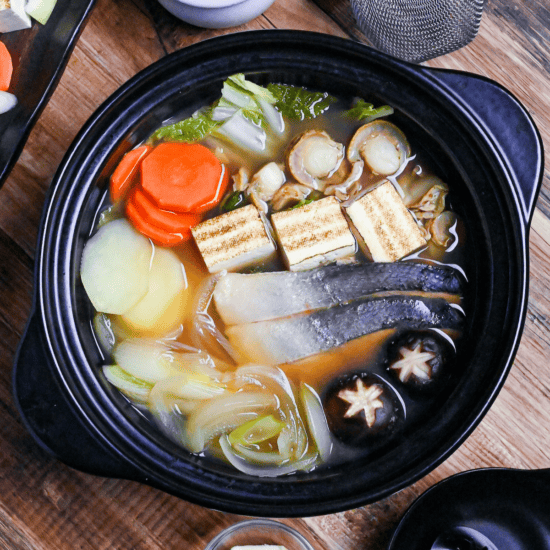


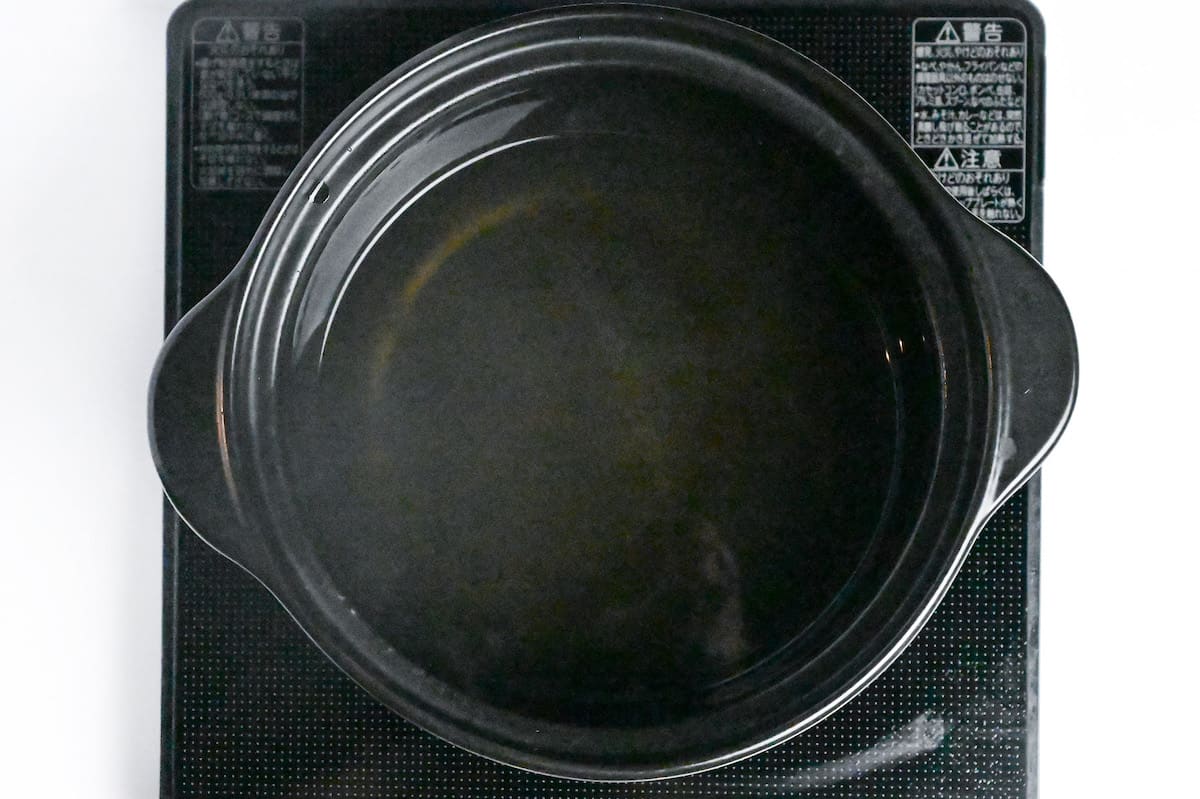
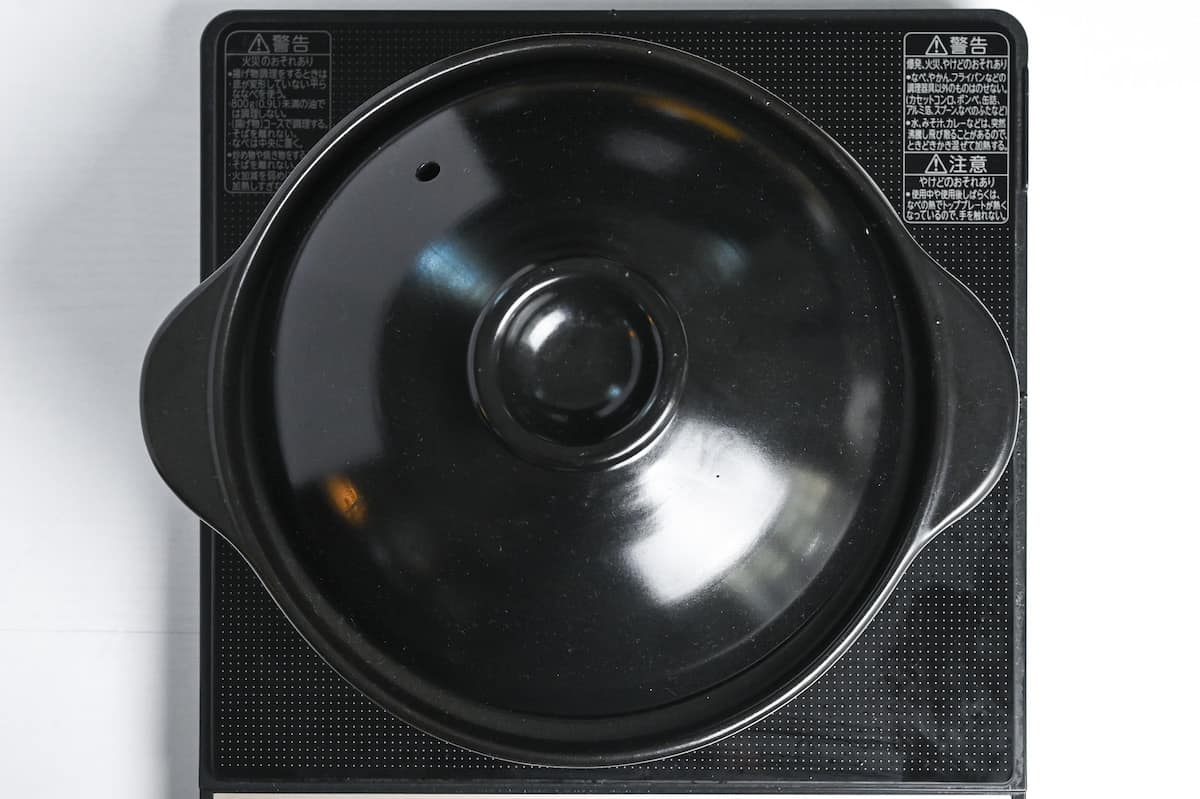
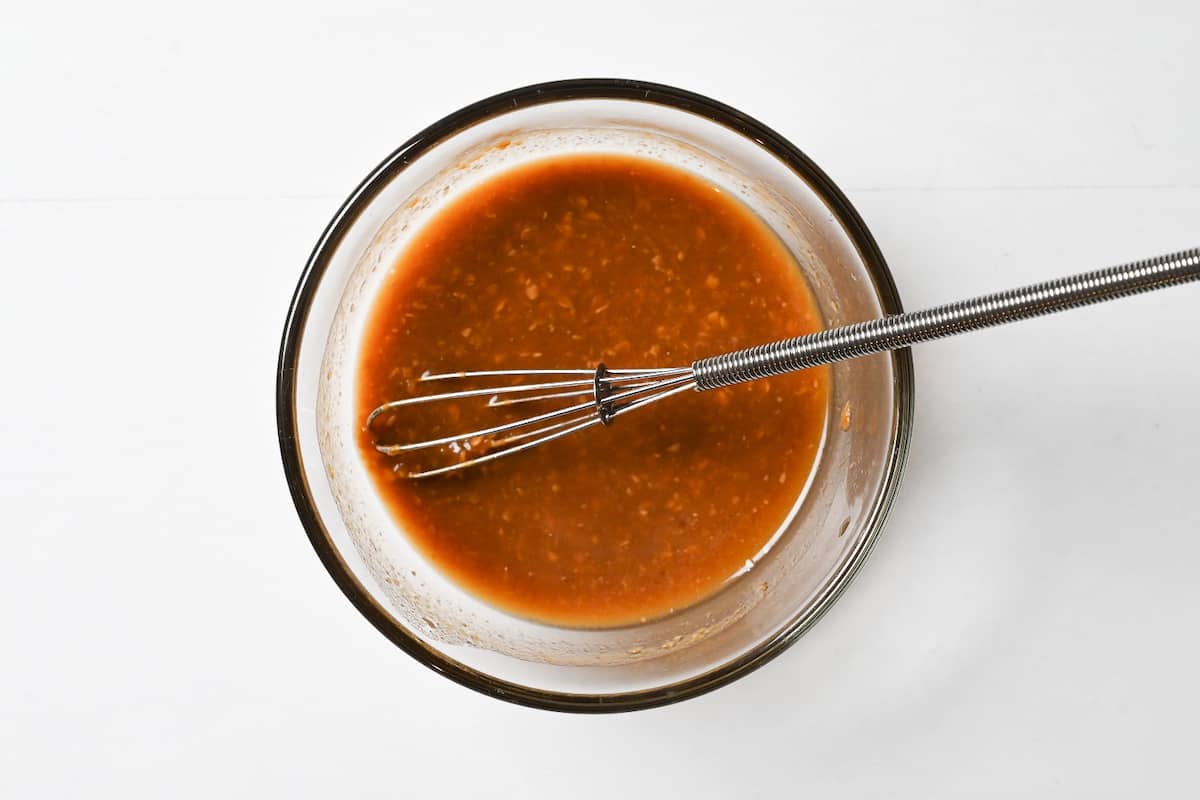
Leave a rating and a comment